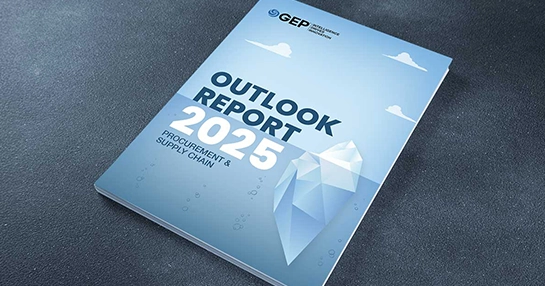
Procurement Strategy Planning: An Operational Imperative
- Effective procurement strategy planning aligns purchasing decisions with organizational goals, transforming procurement from a tactical function to a strategic business partner.
- Successful procurement strategies require a structured approach, including spend analysis, market research, and continuous monitoring, to deliver both cost savings and risk mitigation.
- Artificial intelligence is revolutionizing procurement strategy by enabling data-driven decisions, proactive risk monitoring, and scenario planning that complement human expertise.
April 10, 2025 | Procurement Strategy
Market volatility, geopolitical tensions, and an increasingly complex global supplier landscape have elevated the value of strategic procurement. No longer can procurement be viewed as a mere tactical function focused on obtaining goods and services at the lowest possible cost. Instead, it has evolved into a strategic business partner that contributes significantly to an organization's competitive advantage. This transformation has placed procurement strategy planning at the heart of successful business operations, requiring a thoughtful, methodical approach that aligns purchasing decisions with broader organizational goals.
Fail to Plan. Plan to Fail
A power-packed GEP bulletin on how you can leverage total procurement orchestration to drive strategic value
What is Procurement Strategy Planning?
Procurement strategy planning is the systematic process of developing and implementing approaches to acquire goods and services in a manner that supports an organization's operational needs and strategic objectives. It encompasses a comprehensive framework that guides how an organization will source, purchase, and manage its inputs from external suppliers. Unlike tactical procurement, which focuses on day-to-day purchasing activities, procurement strategy planning takes a long-term view, considering factors such as market trends, supplier relationships, risk management, and value creation beyond mere cost savings.
As a future roadmap, procurement strategy planning provides clarity on how the procurement function will contribute to the organization's competitive position through the strategic acquisition of goods and services.
Why is Procurement Strategy Planning Important?
Procurement typically represents a substantial portion of an organization's expenditure — often ranging from 50-70% of total costs. This substantial financial footprint means that even modest improvements in procurement efficiency can translate into significant bottom-line benefits.
Beyond cost considerations, procurement strategy planning enables organizations to mitigate supply chain risks effectively. With increasing supply chain disruptions — due to natural disasters or geopolitical tensions — organizations with robust procurement strategies are better positioned to anticipate and respond to potential disruptions.
Procurement strategy planning also supports sustainability objectives, which have become increasingly important to investors as well as regulatory bodies. A thoughtful and long-term procurement strategy incorporates environmental, social, and governance (ESG) considerations into supplier selection and management, helping organizations reduce their carbon footprint and ensure ethical practices throughout their supply chain.
Key Steps in Procurement Strategy Planning
Developing an effective procurement strategy requires a structured approach that addresses both current needs and future requirements. The following key steps provide a framework for organizations for procurement strategy planning:
Spend Analysis and Category Assessment
The foundation of any procurement strategy is a thorough understanding of what the organization buys, from whom, at what cost, and under what terms. Procurement professionals should conduct a comprehensive spend analysis, categorizing expenditures to identify patterns, opportunities, and risks. This analysis helps prioritize categories based on factors such as spend volume, supply market complexity, and business criticality.
Market Research and Supplier Landscape Evaluation
Understanding the external environment is critical for developing an informed procurement strategy. This step involves researching market trends, supplier capabilities, industry benchmarks, and competitive dynamics. Organizations should assess the concentration of suppliers in key categories, evaluate the power balance between buyers and suppliers, and identify emerging technologies that might impact procurement practices.
Alignment with Corporate Strategy
Procurement strategy must support and enable broader corporate objectives. This alignment requires close collaboration with executive leadership to understand strategic priorities, growth plans, and competitive positioning. Procurement professionals should translate corporate goals into specific procurement objectives, whether focused on cost reduction, innovation, risk mitigation, or sustainability.
Strategy Development and Implementation Planning
Based on the insights, organizations can develop category-specific strategies and an overarching procurement approach. This includes defining sourcing models (such as single vs. multiple suppliers), contract structures, supplier relationship management approaches, and performance metrics. The strategy should be documented with clear action plans, timelines, and accountability frameworks.
Stakeholder Engagement and Change Management
Successful procurement strategies require buy-in from stakeholders across the organization. Procurement leaders must engage key stakeholders throughout the planning process, communicate the benefits of the strategy, and address concerns or resistance. Change management techniques help ensure smooth implementation and adoption of new procurement practices.
Continuous Monitoring and Refinement
Procurement strategy planning is not a one-time exercise but an ongoing process. Organizations should establish mechanisms to monitor strategy implementation, measure outcomes against objectives, and gather feedback from stakeholders. This enables timely adjustments to the strategy in response to changing business needs or market conditions.
Role of Artificial Intelligence in Procurement Strategy Planning
Artificial intelligence is transforming procurement strategy planning, enabling more data-driven decision-making and process automation. AI-powered analytics tools can process vast amounts of procurement data to identify spending patterns, predict supplier performance, and recommend optimal sourcing strategies. These capabilities provide procurement professionals with deeper insights than traditional analysis methods, helping them make more informed strategic decisions.
In supplier relationship management, AI facilitates more proactive monitoring of supplier performance and risk factors. Machine learning algorithms can analyze data from various sources — including financial statements, news articles, and social media — to detect early warning signs of supplier issues. This enables procurement teams to address potential problems before they escalate into disruptions.
AI also supports scenario planning and simulation, allowing organizations to test different procurement strategies in a virtual environment before implementation. By modeling various scenarios — such as supplier bankruptcies, commodity price fluctuations, or demand spikes — procurement professionals can develop more robust contingency plans and optimize their supplier portfolio.
While AI offers significant benefits, it complements rather than replaces human expertise in procurement strategy planning. The most effective approaches combine AI's analytical capabilities with the strategic thinking, relationship management skills, and business acumen of experienced procurement professionals.
The AI Gap in Procurement: Why High-Growth Firms Must Catch Up Now
Explore how you can leverage AI and automation to transform procurement into a strategic powerhouse
Key Indicators of Successful Procurement Strategy Planning
Organizations can assess the effectiveness of their procurement strategy planning through several key indicators, including:
Strategic Alignment
An effective procurement strategy demonstrates clear connections to corporate objectives and contributes measurably to organizational success. Procurement initiatives should support business priorities and be recognized by executive leadership as strategic value-drivers.
Cost Performance
While not the only consideration, cost remains a crucial indicator. Effective procurement strategies typically deliver sustainable cost improvements, whether through price reductions, demand management, or total cost of ownership optimization.
Risk Management
The strategy should identify and mitigate key supply risks. Indicators include fewer supply disruptions, proactive risk monitoring systems, and resilient supplier networks that can adapt to changing conditions.
Supplier Innovation
Effective procurement strategies foster innovation from the supply base. This can be measured through the number of supplier-driven improvements implemented, collaborative development initiatives, or early access to innovative solutions.
Operational Efficiency
The procurement function itself should operate efficiently. Metrics include cycle time for strategic sourcing projects, procurement staff productivity, and the level of automation in routine procurement activities.
Stakeholder Satisfaction
Internal clients and suppliers should view the procurement function as a valuable partner. Regular satisfaction surveys can gauge perception and identify areas for improvement in the procurement strategy.
Conclusion
Procurement strategy planning has evolved from a tactical exercise focused on cost reduction to a strategic discipline that drives organizational value across multiple dimensions.
As market conditions continue to evolve and technological capabilities advance, those that invest in developing robust procurement strategies today will be better positioned to navigate future challenges and capitalize on emerging opportunities in an increasingly interconnected global economy.



